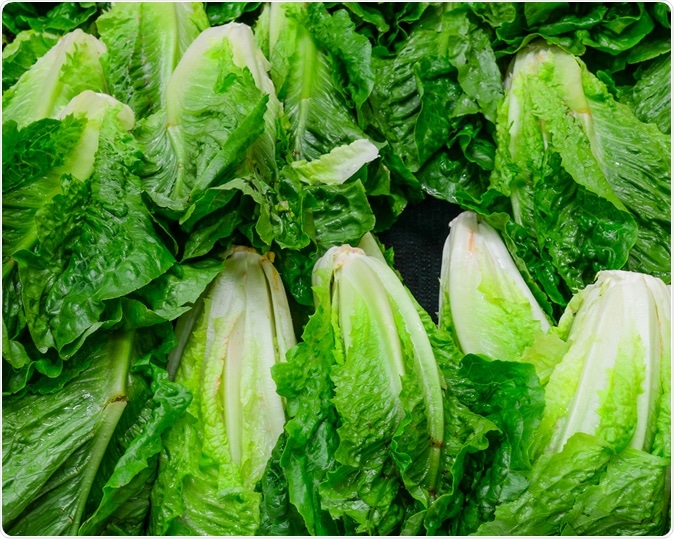According to the Centers for Disease Control and Prevention (CDC), Romaine lettuce alone cannot be blamed for the outbreak of E. coli infections that has already affected 57 people in the United States and Canada. The infections are all due to E. coli O157:H7 strain of the bacteria that produces the Shiga toxin.

Romaine lettuce - Image Credit: Trong Nguyen / Shutterstock
Ian Williams, chief of the CDC's Outbreak Response and Prevention Branch has said that there have been no new cases of E. coli infection since December 2017 but warned that the outbreak is not yet over and caution is warranted. He said that once crop cannot be blamed for it all since people might remain at risk by avoiding just that crop while the actual cause maybe something else altogether. What is worrying, he added, was that the source of the infection is yet to be found. Until the source is known, the outbreak cannot be safely said to be over he explained. Not all of the people infected have said that they have had romaine he said. Similarly the Canadian health authorities have blamed the romaine lettuce but not identified the actual source of the infection i.e. the distributor or the farm that is contaminated with the said bacteria.
Consumer Reports, on its own has issued statements warning people against eating romaine and have criticized the CDC and the US FDA for not warning people. But Williams confirmed that no particular farm or distributor could be pinpointed and thus the warnings could not be issued.
The 17 cases of the infection are spread across 13 different states including California (3 cases), Connecticut (2 cases), Illinois (1 case), Indiana (1 case), Michigan (1 case), Nebraska (1 case), New Hampshire (2 cases), New York (1 case), Ohio (1 case), Pennsylvania (1 case), Virginia (1 case), Vermont (1 case) and Washington (1 case) between from November 15 and December 8, 2017. and the CDC is trying to find the common link among these people. The genetic picture of the bacteria that affected people in US and Canada appeared to be the same said the CDC. Williams explained that the teams were reaching out to the affected people and trying to piece together the places and foods that these people ate the week before they got ill. Not all of them could remember having romaine lettuce or even green leafy vegetables he said. Further, not all people who got infected went to the doctor or got their stool samples checked. This means that there are many more who escaped this radar said Williams.
In addition, lettuce has a short shelf life. This means that most of the contaminated lettuce by now is either consumed or thrown out and cannot be tested for confirmation. Another problem with E. coli infection is that it can contaminate the food at any stage of its production. An infected person can spread it to clean food which means that the farm or the distributor may not be the source of the infection at all. Williams says that the contamination can take place anywhere between the “farm and the fork”.
According to the CDC reports, 48 million Americans get infected annually due to infections carried by foods. At least 3,000 of these are killed and 128,000 need hospitalization for their infection. Another wave of the infections is likely warns Williams.